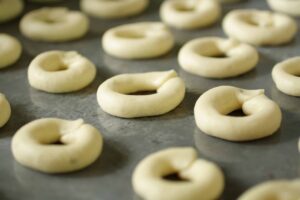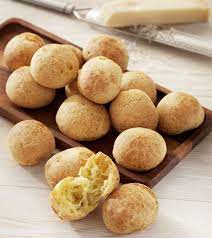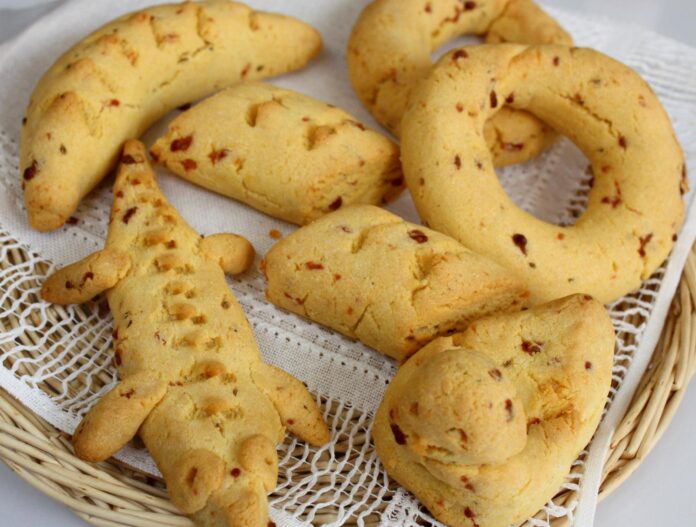Chipa, a traditional Paraguayan snack, holds a special place in the hearts and palates of those who have had the pleasure of tasting it. With its unique blend of flavors and cultural significance, the chip represents the essence of Paraguayan cuisine.
History and Origins of Chipa
The history of china can be traced back to the indigenous Guarani people of South America, who first cultivated the staple ingredients used in its preparation. Over time, chips have evolved into a beloved snack enjoyed by people of all backgrounds, both in Paraguay and beyond.
Ingredients and Preparation of Chipa
Chipa is typically made from a combination of cassava flour (or cornmeal), cheese, eggs, and salt. These ingredients are mixed to form a dough, which is then shaped into small, round balls or elongated rolls. The dough is baked until golden brown, resulting in a crispy exterior and a soft, chewy interior.
Variations of Chipa
While the basic ingredients of chips remain consistent, there are countless variations of this beloved snack. Regional differences in ingredients and preparation methods give rise to unique flavors and textures, ensuring that no two chips are exactly alike.
Chipa: A Culinary Tradition
In Paraguayan cuisine, chipa is more than just a snack—it’s a culinary tradition that brings people together. Whether enjoyed as a mid-morning treat or served as part of a festive meal, chip is a staple of Paraguayan culture, often associated with joyous celebrations and social gatherings.
Health Benefits of Chipa

While chips may be indulgent, it also offers some surprising health benefits. Cassava flour, a key ingredient in China, is rich in fiber and essential nutrients, making chips a satisfying and nourishing snack option.
Chipa Around the World
Despite its origins in Paraguay, the chip has gained popularity around the world, with variations of the snack found in countries as far-flung as Brazil, Argentina, and beyond. In each culture, Chip takes on unique characteristics, reflecting the diverse culinary traditions of its adoptive home.
Making Chipa at Home

For those looking to recreate the magic of chips in their kitchen, making chips at home is a rewarding endeavor. With just a few simple ingredients and a bit of patience, anyone can enjoy the delicious flavors of homemade chips.
Chipa: More Than Just a Snack
Beyond its culinary appeal, chipa holds deep cultural significance for the people of Paraguay. It’s a symbol of unity and community, often shared among friends and loved ones during special occasions and everyday gatherings.
Chipa in Popular Culture

Chipa has also made its mark in popular culture, appearing in literature, film, and television as a symbol of Paraguayan identity and cuisine. From iconic scenes featuring chip vendors to literary references extolling its virtues, the chip occupies a cherished place in the cultural landscape.
FAQs (Frequently Asked Questions)
- What do chips taste like?
China has a unique flavor that combines the nuttiness of cassava flour with the richness of the cheese. It’s savory, cheesy, and slightly chewy, with a crispy exterior. - Can I freeze Chipa?
Yes, chips can be frozen for later enjoyment. Simply place the baked chips in an airtight container or freezer bag and freeze for up to several months. To reheat, simply warm in the oven until heated through. - Is Chipa gluten-free?
Traditional chips made with cassava flour are naturally gluten-free. However, some variations of chips may contain wheat flour, so it’s essential to check the ingredients if you have a gluten intolerance or allergy. - What is the best cheese to use for chips?
The best cheese for chips is a firm, salty cheese such as queso fresco or parmesan. These cheeses provide a rich flavor and a satisfying texture to the finished snack. - What is the best way to enjoy Chi-pa?
Chi-pa can be enjoyed on its own as a snack or served alongside other dishes as part of a meal. It pairs well with coffee or tea for breakfast or as a mid-afternoon pick-me-up.
Conclusion
In conclusion, chi-pa is more than just a snack—it’s a cultural icon that represents the rich culinary heritage of Paraguay. With its unique flavors, versatile ingredients, and deep cultural significance, chip has captured the hearts and taste buds of people around the world. Whether enjoyed as a savory treat or shared among friends and family, chip embodies the joy of good food and shared traditions.

